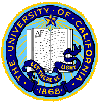 |
Scott Jordan | |
|
|
Our focus in this work is on universal service. The work is based on the experience of serving as an IEEE/AAAS Congressional Fellow during 2006, and working on this issue in the United States Senate.
The United States Universal Service Fund, as established in the 1996 Communications Act, was created to provide access to advanced telecommunications and information services in all regions of the Nation. Universal service, however, has to date been defined principally in terms of telephone services. Fund growth due to increases in wireless lines and implicit support for broadband infrastructure has created an untenable situation, and fundamental reform is expected. The cause underlying this growth is convergence between the telephone network, wireless networks, the Internet, and cable networks. This convergence will pose additional serious long term challenges to the Fund. The United States Congress is considering expanding Universal Service to include broadband Internet access.
This paper proposes a restructuring of the high-cost funds based on a layered model. Both contributions and distributions are focused on network infrastructure, without distinction between voice and broadband. The proposal uses a new definition of communication services to guarantee technology neutrality, and includes service area reform and cost efficiency measures. This layered approach repositions the Fund for future converged networks.
A Layered United States Universal Service Fund for an Everything-over-IP world, Telecommunications Policy, vol. 33, no. 3-4, April-May 2009, pp. 111-128.
Portions of this work were supported by NSF. Any opinions, findings, conclusions or recommendations expressed in this material are those of the author(s) and do not necessarily reflect the views of the National Science Foundation, Sen. Ben Nelson, or IEEE. This material is presented to ensure timely dissemination of scholarly and technical work. Copyright and all rights therein are retained by authors or by other copyright holders. All persons copying this information are expected to adhere to the terms and constraints invoked by each author's copyright. One print or electronic copy may be made for personal use only. Permission must be obtained from the copyright holder for systematic or multiple reproduction, distribution to multiple locations via electronic or other means, duplication of any material in these papers for a fee or for commercial purposes, modification of the content of these papers, reprinting or republishing of this material for advertising or promotional purposes or for creating new collective works for resale or redistribution to servers or lists, and to reuse any copyrighted component of this work in other works.